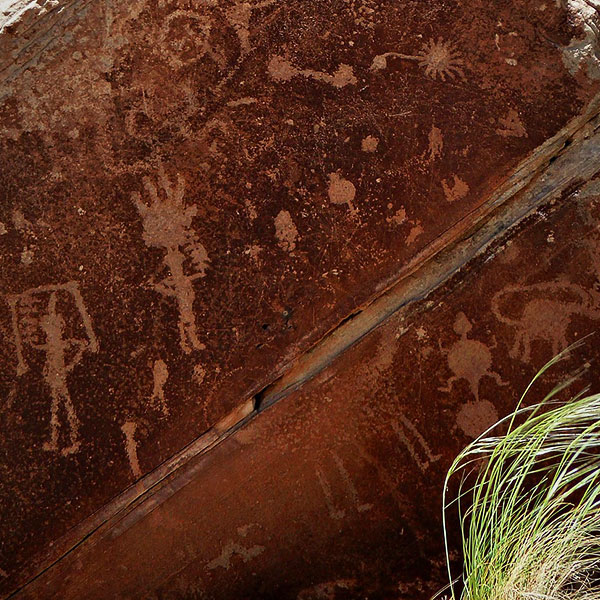Yellow is the third colour in the rainbow with relatively long wavelengths. Red is the first with the longest wavelength and blue being last with the shortest. Yellow is that nice happy colour just before the balance of green. It is relatively versatile and fairly non-threatening on its own. However when paired with black, it denotes danger.
Yellow is part of the three primary colours, red yellow blue. Yellow is complementary to purple on the colour wheel. It also forms part of the four colours used in the printing colour model of CMYK, cyan, magenta, yellow and black.
Language
The word ‘yellow’ comes from Old English ‘geolu’.
The term ‘yellow belly’ begins with 18th century English slang, reference to bile and queasiness. In 1842, an American newspaper referred to Mexican soldiers as ‘yellow bellied’.
Meaning
The general meaning for yellow is that it is a happy colour, and has been associated with gold and the sun. However it can have more negative connotations and if used in excess, can cause insanity and anxiety.
In the West, it is associated with cowardice traditionally but took on more fun connotations as time moved into the Renaissance.
In the East, it can be associated with heroism. In India, yellow is used in the form of turmeric and is very popular for happy occasions. In China, yellow is at the top of their list of colours for their five colour system linking to philosophy, medicine and Feng Shui. It’s the colour of the yellow dragon, jujube. Chinese Buddhist monks also wear yellow.
Pigments
Yellow ochre was the first pigment used for yellow paint. Evidence of this can be found in cave paintings dating to 20,000 years ago.
Orpiment was also used a pigment, it had a yellow tone and was sometimes used in place of gold. However it was made with arsenic so was poisonous.
Before synthetic dyes for clothes and hair, the deepest brightest yellow came from saffron. Other natural sources come from turmeric and jackfruit juice. An old recipe for Indian yellow oil paint comes from a pigment that contained crystallized urine of cows or water buffalo that were fed exclusively on mango leaves which made them suffer. It smelled horrible but was widely used until 1910. Other alternatives were highly toxic like chrome yellow made from lead-chromium oxide – when mixed with acid, it turned brilliant yellow; when mixed with alkali it turned orange – but contained high levels of poisonous lead.
Natural pigments that give the yellow colour to autumn leaves, corn, lemons and egg yolks come from carotenoids. The most common yellow pigment from the carotenoid group is xanthophylls.
Tones of Yellow
Yellow can range from warmer yellows that sit more towards the red side of the rainbow, such as daffodil and sunflower. Cool yellows with an undertone of green are more towards the lemon tones and fluorescent yellow.
General Use in Society
Palaeolithic Times
Yellow was used in cave paintings using yellow ochre pigment.
Ancient Times
Ancient Egypt used yellow which was associated also with gold and the gods. They would paint their murals and frescos using yellow paint, primarily for skin tones.
Ancient Romans also used yellow to represent gold and also skin tones in their paintings.
In China Gongsun Xuanyuan 2699 – 2588 BCE was the first of five mythical ‘Yellow Emperors’. ATang Dynasty decree survived to Qing Dynasty 20th century, stating that only the emperor can wear bright yellow and his sons to wear other shades of yellow.
Middle Ages and Renaissance
In Medieval times it was colour of cowardice, seen as dirty white. In theatre and art, yellow was colour of hypocrisy, dishonesty, sin.
In Spain it was worn by executioners.
Jews and Christians to wear yellow badges in early 18th century Middle East. Louis IX France, ordered Jews to wear yellow pointed hats, later on round yellow patches. This was later adopted by King Edward I. In 1939, Nazis required Jews to wear yellow Star of David with the word ‘Jew’ on it as a prelude to sending them to concentration camps.
Modern Times
In 1814, John Hertz started yellow cab company. 1909, orange-yellow cabs appeared in Manhattan yellow cab company of Baltimore was founded.
Vincent van Gogh was fond of chrome yellow which he used in paintings of sunflowers, yellow calendulas, stars and lamplight. This paint was poisonous and some believe using it as much as he did, lead to his death.
American suffragettes were the first to wear yellow ribbons as symbol for protest in 1867, Kansas, yellow was the colour of the state flower, the wild sunflower.
In 1960s The Beatles song ‘Yellow Submarine’ gave the colour a happy edge.
McDonalds helped to establish yellow in their marketing as a happy colour and for fast food, pairing it with red. Today, this is subtly changing in the interiors of McDonalds as they attempt to add healthier options to their menu and encourage more of a sit down experience rather than in and out in a fast paced environment.





